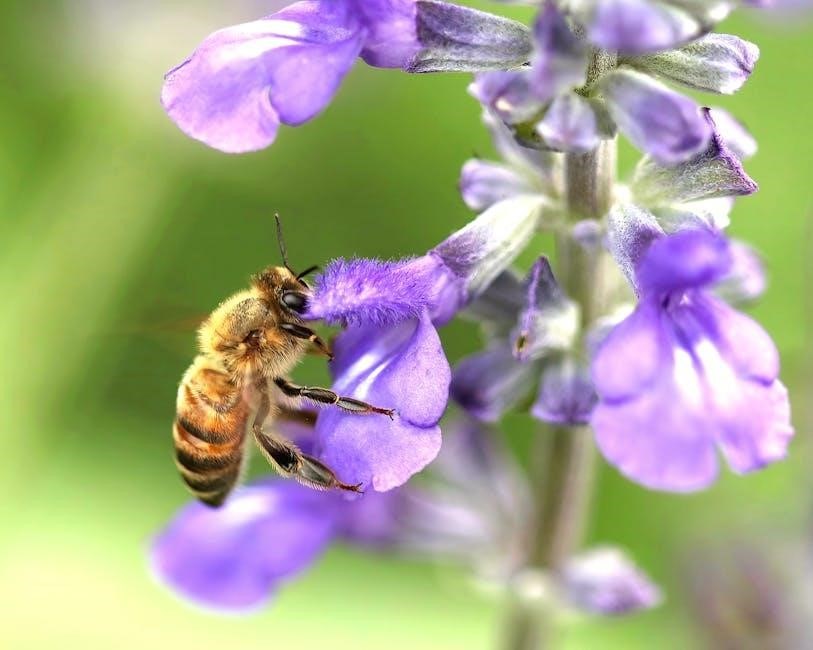Biology worksheets with answers are essential tools for learning and teaching biological concepts. They cover fundamental topics, provide structured exercises, and include answers for self-assessment and progress tracking.
Importance of Worksheets in Biology Education
Biology worksheets are crucial for reinforcing concepts, promoting active learning, and improving retention. They provide structured exercises that cater to various learning styles, making complex topics accessible. Worksheets with answers enable students to practice problem-solving, apply theoretical knowledge, and self-assess their understanding. Regular use of worksheets enhances critical thinking, scientific literacy, and exam preparation. Additionally, they serve as valuable resources for teachers to track student progress and identify areas needing further instruction. Incorporating worksheets into biology education fosters a deeper engagement with the subject matter.
Benefits of Using Worksheets with Answers
Worksheets with answers offer numerous benefits for biology students. They provide clear guidance, allowing learners to assess their understanding and identify knowledge gaps. Answer keys enable self-assessment, fostering independence and confidence. These resources are ideal for homework, revision, and exam preparation, ensuring a thorough grasp of biological concepts. Worksheets with answers also cater to diverse learning needs, making them versatile tools for both classroom and self-study environments. They promote effective learning and serve as valuable aids for educators in monitoring student progress.
Overview of Biology Topics Covered in Worksheets
Biology worksheets with answers PDF cover a wide range of topics, including cell biology, photosynthesis, human systems, genetics, and ecology. They address concepts like cell structure, transport mechanisms, and the processes of respiration and digestion. Worksheets also explore genetics, such as DNA replication and Mendelian inheritance, and environmental topics like ecosystems and conservation. These resources are designed to cater to various educational levels, ensuring comprehensive coverage of biological principles and practical applications.

Cell Biology Worksheets
Cell biology worksheets with answers provide detailed exercises on cell structure, transport mechanisms, and the cell cycle, enhancing understanding of cellular functions and processes.
Cell Structure and Organization
Biology worksheets with answers on cell structure and organization cover key topics such as cell membranes, organelles, and their functions. These exercises include labeling diagrams, matching activities, and short-answer questions to reinforce understanding. They provide a detailed exploration of cellular components, enabling students to visualize and comprehend the intricate organization of cells. The inclusion of answer keys allows for self-assessment, ensuring mastery of these foundational concepts. These resources are designed to enhance learning and retention of cell biology principles effectively.
Cell Transport and Membrane Functions
Biology worksheets with answers on cell transport and membrane functions explore how cells move materials across their membranes. Topics include passive transport (diffusion, osmosis) and active transport, highlighting membrane structure and its role in regulating movement. These exercises often feature diagrams, multiple-choice questions, and short-answer prompts to test understanding of transport mechanisms. Answer keys provide feedback, helping students grasp how cells maintain homeostasis and exchange essential substances. These resources are invaluable for mastering membrane dynamics and cellular transport processes effectively.
- Covers passive and active transport mechanisms.
- Includes membrane structure and function exercises.
- Provides interactive activities for deeper comprehension.
Cell Cycle and Division
Biology worksheets with answers on the cell cycle and division delve into the stages of mitosis, meiosis, and cytokinesis. These resources cover the roles of key proteins, chromosomes, and cellular changes during each phase. Exercises include labeling diagrams, matching terms, and solving problems related to cell division. Answer keys ensure accurate feedback, helping students master concepts like the importance of cell division in growth, repair, and reproduction. These worksheets are ideal for reinforcing understanding of cellular processes and their biological significance.

- Explores mitosis and meiosis stages in detail.
- Includes labeled diagrams and interactive exercises.
- Provides clear explanations and answer keys for self-study.

Photosynthesis and Respiration Worksheets
Biology worksheets with answers cover photosynthesis and respiration processes, reactants, and products. They include diagrams, equations, and exercises to enhance understanding of energy conversion in cells.
Process of Photosynthesis
Biology worksheets with answers detail the photosynthesis process, covering light-dependent and light-independent reactions. They include stages like light absorption, water splitting, and carbon fixation. Worksheets explain how chloroplasts convert light energy into chemical energy, producing glucose and oxygen. They also address factors affecting photosynthesis, such as light intensity and carbon dioxide levels, providing exercises to calculate photosynthetic rates. Answer keys are included for self-assessment, making these resources ideal for students to master the process.
Reactants and Products of Photosynthesis
Biology worksheets with answers emphasize the key reactants and products of photosynthesis. The primary reactants are carbon dioxide, water, and light energy, while the main products are glucose and oxygen. Worksheets explain how these components interact during the light-dependent and Calvin cycles. They often include diagrams and exercises to identify and label reactants and products, reinforcing understanding. Answer keys provide correct identifications and explanations, helping students master the fundamental chemistry of photosynthesis and its importance in ecosystems.
Aerobic and Anaerobic Respiration
Biology worksheets with answers detail the processes of aerobic and anaerobic respiration, focusing on their reactants, products, and energy yields. Aerobic respiration uses oxygen to convert glucose into carbon dioxide, water, and ATP, while anaerobic respiration produces lactic acid or ethanol without oxygen. Worksheets include diagrams, equations, and exercises to compare these processes. Answer keys clarify the differences, helping students understand energy production in cells and the importance of oxygen in metabolism. These resources are essential for mastering cellular respiration concepts.
Human Biology Worksheets
Explore the human body’s systems, including the digestive, circulatory, and nervous/endocrine systems, through detailed worksheets. Answer keys provide clarity for self-assessment and deeper understanding of human functions.
Digestive System Functions
Biology worksheets with answers pdf explore the digestive system’s role in breaking down food into nutrients. Topics include ingestion, digestion, absorption, and excretion processes. Worksheets detail how organs like the stomach, intestines, and liver function, supported by diagrams and labeled illustrations. Interactive exercises and answer keys help students grasp enzyme roles, nutrient absorption, and waste elimination. These resources simplify complex physiological concepts, making them accessible for learners at all levels. Answer keys ensure accurate self-assessment and reinforce understanding of digestive processes.
Circulatory System Components
Biology worksheets with answers pdf detail the circulatory system’s structure and function. Topics include the heart, blood vessels, and blood components. Worksheets explain how these elements work together to transport oxygen and nutrients. Interactive exercises, such as labeling diagrams, help students identify arteries, veins, and capillaries. Answer keys provide feedback, ensuring understanding of blood flow and circulatory processes. These resources simplify complex cardiovascular concepts, making learning engaging and effective for students of all levels.
Nervous and Endocrine Systems
Biology worksheets with answers pdf explore the nervous and endocrine systems, focusing on their roles in communication and regulation. Topics include neuron structure, synaptic transmission, hormones, and glands. Worksheets feature labeling exercises, such as identifying brain regions or endocrine organs. Interactive activities, like matching hormones to functions, enhance understanding. Answer keys provide immediate feedback, helping students grasp how these systems maintain homeostasis and respond to stimuli. These resources offer a comprehensive way to study complex physiological processes in an engaging format.
Genetics and Heredity Worksheets
Genetics worksheets cover DNA replication, Mendelian inheritance, and dihybrid crosses. They include answer keys, offering interactive exercises to master heredity principles and genetic problem-solving skills effectively.
DNA Replication and Structure

DNA replication and structure worksheets provide detailed exercises on DNA’s double-helix model, replication mechanisms, and key processes like transcription and translation. These worksheets, available in PDF formats, include answer keys for self-assessment. They cover topics such as semi-conservative replication, DNA packaging, and the role of enzymes like helicase and DNA polymerase. Interactive activities, such as labeling diagrams and solving replication problems, enhance understanding. Students can access both printable and digital versions, making learning flexible and engaging for various educational settings.
Mendelian Inheritance Patterns
Mendelian inheritance worksheets explore the fundamental laws of genetics, including segregation, independent assortment, and dominance. These resources, often in PDF format, include exercises on Punnett squares, dihybrid crosses, and phenotypic ratios. Answer keys and study guides are provided to help students master concepts like recessive and dominant traits. Interactive activities, such as solving genetic problems and labeling diagrams, make learning engaging. Worksheets also cover extensions of Mendel’s laws, such as epistasis and incomplete dominance, ensuring a comprehensive understanding of hereditary patterns.
Dihybrid Cross Problems
Dihybrid cross problems are essential for understanding genetic interactions and trait inheritance. Worksheets often include exercises on creating Punnett squares, calculating phenotypic ratios, and predicting offspring traits. Answer keys provide correct solutions, enabling students to verify their work. These resources cover both simple and complex crosses, such as those involving recessive and dominant traits. By solving dihybrid cross problems, learners gain insights into how multiple genes interact, reinforcing their grasp of genetic principles and inheritance patterns. PDF formats make these worksheets easily accessible for practice and review.

Ecology and Environment Worksheets
Explore ecosystems, biotic factors, and conservation biology with printable PDF worksheets. These resources include answer keys, ideal for understanding environmental interactions and promoting sustainable practices effectively.
Biotic and Abiotic Factors
Understanding the difference between biotic (living) and abiotic (non-living) factors is crucial in ecology. Worksheets with answers provide interactive exercises to identify and classify these components within ecosystems. Activities include matching games, fill-in-the-blanks, and true/false questions. Students learn how biotic factors, such as plants and animals, interact with abiotic elements like sunlight, water, and temperature. These resources enhance comprehension of how these factors influence ecosystem balance and biodiversity. Suitable for all educational levels, they include answer keys for easy grading and feedback.
Ecosystems and Food Chains
Biology worksheets with answers explore ecosystems and food chains, detailing energy flow and nutrient cycling. Activities include labeling diagrams, creating food webs, and identifying producers, consumers, and decomposers. These exercises help students understand how species interact within their environments and the impact of disturbances on ecosystems; Answer keys provide clear solutions, making it easier for educators to assess student progress and for learners to self-evaluate their understanding of ecological relationships and interdependencies. These resources are ideal for both classroom and homeschool settings.
Conservation Biology Basics
Biology worksheets with answers introduce students to conservation biology, focusing on biodiversity, extinction risks, and ecosystem preservation. Activities include identifying threats to species, understanding conservation methods, and analyzing case studies. Worksheets often feature matching exercises, fill-in-the-blanks, and short-answer questions to reinforce key concepts. Answer keys provide immediate feedback, helping learners gauge their understanding of strategies to protect endangered species and restore habitats. These resources are designed to inspire stewardship and promote environmental awareness through interactive and educational exercises. They are ideal for middle and high school levels.
Anatomy and Physiology Worksheets
Anatomy and physiology worksheets explore the structure and function of living organisms. They cover topics like human body systems, cells, and tissues, with answers provided for review.
Labeling Human Teeth
Biology worksheets with answers often include exercises on human anatomy, such as labeling teeth. These worksheets detail the structure of incisors, canines, premolars, and molars, as well as their functions. Students learn to identify enamel, dentin, and pulp, and understand their roles in tooth health. PDF versions provide clear diagrams, while answer keys ensure accuracy. These resources are ideal for interactive learning, helping students grasp dental anatomy and its significance in digestion and overall health.
Monocot vs Dicot Plants

Biology worksheets with answers often include exercises to distinguish between monocot and dicot plants. Monocots have one cotyledon in seeds, while dicots have two. Worksheets highlight differences in roots, stems, and leaves, such as fiber distribution and vascular tissue arrangement. PDF resources provide labeled diagrams and interactive activities for identification. Answer keys ensure accuracy, making these tools ideal for understanding plant anatomy and classification. These exercises are particularly useful for botany and general biology studies.
Bones, Muscles, and Skin

Biology worksheets with answers often include detailed exercises on the human skeletal, muscular, and integumentary systems. Worksheets focus on identifying bone structures, muscle types, and skin layers. Activities include labeling diagrams, matching terms, and answering questions about functions and interactions. PDF resources provide clear illustrations and interactive exercises for hands-on learning. Answer keys ensure accurate self-assessment, making these tools invaluable for understanding anatomy and physiology. These exercises help students grasp the complex relationships between bones, muscles, and skin in the human body.

Scientific Skills and Practices
Biology worksheets with answers enhance scientific skills through activities like lab report writing, dissection guides, and microscopy techniques. They include answer keys for accurate assessment.
Lab Report Writing Guidelines
Biology worksheets with answers often include lab report writing guides, providing structured templates and examples. These resources help students understand key sections like introduction, materials, procedure, results, and conclusion. Clear instructions emphasize concise writing, proper data presentation, and accurate analysis. Worksheets may also cover graphical representation of data and interpretation techniques. Additionally, answer keys are provided to assist in grading and self-assessment. These tools are essential for developing scientific communication skills and ensuring thorough documentation of experiments. They cater to various educational levels, making them versatile for classroom and homework use.
Dissection Guides for Biology
Dissection guides are essential resources for hands-on learning in biology. They provide detailed step-by-step instructions for exploring anatomical structures, such as human teeth, bones, and plants. Worksheets often include labeled diagrams, identification keys, and answer sections for self-assessment. These guides help students develop practical skills and reinforce theoretical knowledge. Many resources, like those from Biology Corner, offer downloadable PDF guides with answers, making them ideal for classroom use or independent study. They cater to various educational levels, ensuring comprehensive understanding of biological structures and their functions.
Microscopy and Laboratory Techniques
Microscopy and laboratory techniques are fundamental skills in biology. Worksheets on this topic include exercises on microscope setup, sample preparation, and magnification calculations. They often feature labeled diagrams of microscope parts and common specimens. Answer keys provide correct measurements and identifications. These resources enhance practical lab skills and understanding of cellular structures. Available as downloadable PDF files, they are ideal for classroom or homeschool use, ensuring students master essential laboratory practices and microscope handling effectively.
Resources for Biology Worksheets
Find free printable biology worksheets with answers in PDF format, along with study guides and vocabulary sets. These resources are available on educational websites and marketplaces like Teachers Pay Teachers, offering comprehensive support for teachers and students.
Free Printable Biology Worksheets
Access a wide range of free printable biology worksheets with answers in PDF format. These worksheets cover topics like cell biology, genetics, and ecology, providing interactive learning tools for students. Websites such as Teachers Pay Teachers and Biology Corner offer downloadable resources, making it easy to print and use them for classroom or homeschool activities. Many worksheets are designed with answer keys, enabling self-assessment and tracking progress effectively. They cater to various educational levels, ensuring comprehensive learning support for biology enthusiasts.
Answer Keys and Study Guides
Accompanying biology worksheets with answers are comprehensive answer keys and study guides. These resources provide detailed explanations for correct and incorrect responses, helping students understand their mistakes. Study guides often include summaries of key concepts, diagrams, and additional practice questions. Educators can use these tools to assess student progress, while learners benefit from self-assessment and reinforced learning. Many resources are available in PDF format, making them easy to access and print for classroom or independent study. This combination supports effective learning and teaching in biology.
Vocabulary Sets for Key Concepts
Vocabulary sets for key concepts are integral to biology worksheets with answers, ensuring students grasp foundational terminology. These sets cover topics like cell biology, genetics, and ecology, providing definitions and usage examples. They help learners build a robust understanding of biological terms, enhancing their ability to engage with complex concepts. Available in PDF format, these vocabulary resources are easily accessible and printable, making them invaluable for study and review. They complement worksheets, fostering better retention and application of biological knowledge.
Biology worksheets with answers provide comprehensive learning tools, enhancing understanding through structured exercises and clear solutions. They are invaluable resources for effective biology education and skill development.

Final Thoughts on Using Biology Worksheets
Biology worksheets with answers are invaluable educational tools, offering structured learning and immediate feedback. They cover diverse topics, from cell biology to ecology, ensuring comprehensive understanding. Their PDF format makes them easily accessible and printable, while answer keys provide reassurance and clarity. These resources support both teachers and students, fostering engagement and efficiency in learning. By utilizing these worksheets, learners can grasp complex concepts effectively, making them essential for successful biology education and lifelong scientific exploration.
Recommendations for Further Study
For deeper understanding, explore additional resources like Teachers Pay Teachers and Biology Corner for interactive worksheets. Utilize GCSE biology guides for exam-specific practice. Supplement learning with online simulations and virtual labs to enhance practical skills. Regularly review answer keys for self-assessment and consider advanced topics like biochemistry or ecology for broader knowledge. Engage with study groups or tutors for clarification of complex concepts, ensuring a well-rounded grasp of biology through continuous exploration and practice.
